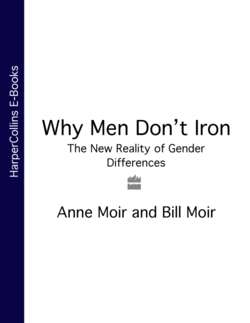Читать книгу Why Men Don’t Iron: The New Reality of Gender Differences - Anne Moir - Страница 18
CHAPTER THREE Foodsex II Where’s the beef?
Оглавление‘There are so many women in the place, the menu had got like a Kensington wine bar! They think three lettuce leaves and a spoonful of tuna is a good lunch. We don’t.’
Joe Ashton MP was fighting back (successfully, too) against the feminization of the House of Commons dining room. Even there, it seems, the food police had struck. ‘There was too much fettucine and penne,’ said Mr Ashton, ‘and not enough steak and kidney pie and stew.’1 He was showing the same dietary preference as the male rats studied by researchers at Rockefeller University, New York, where newborn rodents were presented with a choice of pure protein, carbohydrates and fats. By week four the females showed a strong preference for the carbohydrates, while the males opted for the fats and proteins2 – for meat. An instinctual choice? But let us be wary of rattomorphism, which is the practice of applying rat studies to humans.
Students at the University of Delaware were photographed by hidden cameras as they chose their evening meals in the college dining hall. The men chose bigger portions. No surprise. ‘When protein-containing foods were limited men increased their selection of higher-fat items so that energy intake was unchanged.’3 What the authors did not point out (though their own data shows it) is that the men consumed three times more burgers, roast beef, meat balls, and steak sandwiches than the women. You can lead a man to a salad bar, but you can’t make him eat.
Men, given a choice, do what Joe Ashton does: they choose red meat. Yet those who take most of the diet decisions for men, women, choose to give them white meat instead. In the eighties, while beef consumption in the USA dropped from 91 to 73 pounds per person,4 chicken consumption jumped from 30 to 43 pounds a person. Fish eating also went up, from 13 to 15 pounds a person. In the ten years to 1995 white meat consumption rose by nearly a third in the UK, while beef and lamb consumption fell by a quarter.5
Did the cost of red meat cause the decline? If it was purely a matter of economics then the greatest fall would surely be among lower-income consumers, but it was women with the highest incomes who reduced their beef intake the most.6 So the reason for the sharp decline is not to be found in price constraints.
Perhaps it was fears of mad cow disease? No: the dates are wrong. The decline in sales of red meat predates the 1996 BSE (bovine spongiform encephalopathy) scare which, anyway, is confined to cattle raised in the UK. To date the annual rate of deaths likely to have been caused by BSE shows little or no difference from the rate of deaths caused by salmonella,7 which is too often caused by cross-contamination from chicken skin. Somehow white meat does not inspire the same sense of danger as red meat.
Beef sales declined not because of price, and not because of BSE, but because the food experts kept telling us that it was unhealthy. ‘For a healthy diet, choose fish and poultry instead of red meats,’ is conventional nutritional and medical advice.8 And the underlying reason for this advice is the popular belief that the saturated fats in red meat lead to a high cholesterol count, while those in white meat do not.9 Beef kills you; what better reason can there be for avoiding it?
